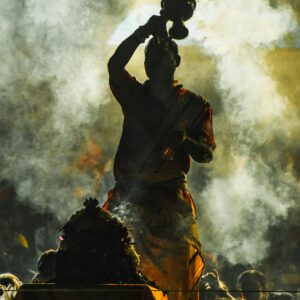Globalization has transformed the way societies interact, creating opportunities for cultural exchange while posing challenges to the preservation of traditional identities. In India, a country celebrated for its diversity and cultural richness, the question of whether we are preserving our cultural identity amidst globalization is both pressing and complex.
Cultural Identity in a Globalized World
India’s cultural identity is deeply rooted in its languages, traditions, festivals, and arts. However, the rapid spread of global trends, fueled by advancements in technology and media, has introduced new lifestyles, ideologies, and consumer behaviors. While this integration has broadened perspectives and fostered innovation, it has also led to concerns about the dilution of cultural uniqueness.
For instance, the decline in the usage of regional languages is a stark indicator of this shift. According to the 2011 Census of India,42% of Indians speak Hindi, while many regional languages are witnessing a decline in native speakers. UNESCO has even categorized several Indian languages as endangered, highlighting the urgent need for preservation efforts.
Traditions Under Threat
Globalization often influences traditional practices, leading to the commercialization or modification of cultural rituals. Festivals like Diwali and Holi, once deeply spiritual and community-driven, are now increasingly commercialized. Traditional attire is giving way to global fashion trends, while fast food chains compete with India’s rich culinary heritage.
Yet, globalization has also enabled the global recognition of Indian culture. Yoga, Bollywood, and Indian cuisine have gained international acclaim, often becoming symbols of cultural pride. However, this visibility raises questions about authenticity, as these cultural elements are sometimes adapted to suit global preferences, potentially losing their essence.
Balancing Preservation and Progress
Preserving cultural identity in a globalized world does not mean rejecting modernity. Instead, it requires a conscious effort to integrate traditional values with contemporary realities. Initiatives like UNESCO’s Intangible Cultural Heritage program, which includes India’s practices like yoga and the Kumbh Mela, play a vital role in safeguarding traditions.
Educational reforms emphasizing regional languages, folk arts, and history can also help future generations stay connected to their roots. The rise of digital platforms has facilitated this, with online courses, documentaries, and social media campaigns promoting cultural preservation.
Conclusion
India’s cultural identity faces undeniable challenges in the era of globalization, yet it also holds immense resilience. By embracing both tradition and progress, India can ensure that its cultural heritage thrives amidst global influences. The responsibility lies with individuals, communities, and policymakers to nurture this delicate balance, ensuring that globalization becomes a tool for cultural enrichment rather than erosion. In doing so, India can remain a beacon of cultural diversity in an increasingly interconnected world.











